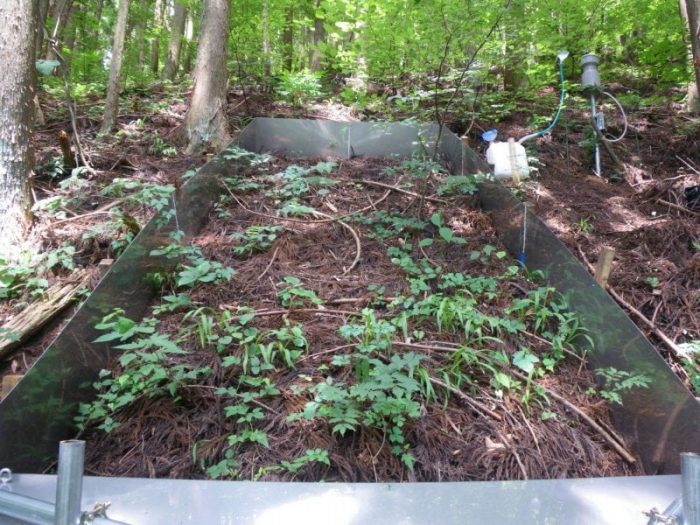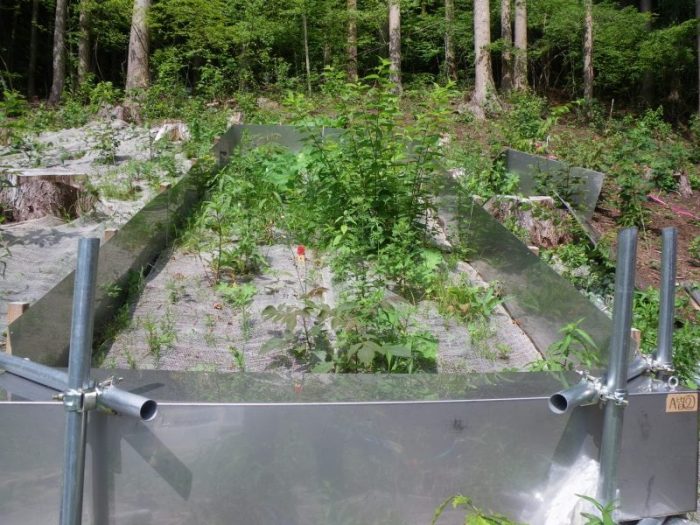
Owing to an earthquake and the resulting tsunami that occurred on March 2011 in central-eastern Japan, the Fukushima Dai-ichi Nuclear Power Plant was damaged by several hydrogen explosions.
This accident released a vast amount of radionuclides, including caesium 134 and 137 (ca. ratio 1:1). Initial fallout contaminated cultivated soils (mainly paddy fields), forests, water bodies, residential areas, asphalt and concrete surfaces. Since then, a variety of decontamination practices have been completed, reducing the ambient dose rates.
In a recent study, published in Environmental Pollution (available online since April 19, 2018) and conducted by Prof. Yuichi Onda (University of Tsukuba, Japan), Dr. Manuel López-Vicente (EEAD-CSIC, Soil Management and Global Change Group), and staff of Onda’s Laboratory and Asia Air Survey Co., eight decontamination practices were evaluated in a forest plantation located 16 km southwest of the power plant and within the exclusion area. The stand is composed of a forest plantation of Japanese cedar (Cryptomeria japonica) and natural understory vegetation. This plantation has an age of 58 years (in 2017) and is located on a steep hillslope (average slope gradient of 25⁰) near Kawauchi village, in the Fukushima Prefecture. Ten runoff plots were installed and managed by the Fukushima Prefectural Forestry Research Centre.

Fig.1
Radiocesium (Cs-137) concentrations and activities were calculated in soil and litter samples over 27 months (May 2013 – July 2015) and after decontamination practices. One plot was devoted to litter removal; two plots to tree thinning without litter removal (Th_1 with logged area, and Th_2 under remnant trees); two plots to tree thinning with litter removal (Th + LR_1 with logged area, and Th + LR_2 under remnant trees); and three plots to clearcutting with litter removal (CC + LR_1 without matting, CC + LR_2 matting with seeds, and CC + LR_3 matting without seeds). Finally, two plots (Co_1 and Co_2) remained as control plots without application of any decontamination practice.
Differences were statistically significant, and researchers distinguished four homogeneous groups. Tree thinning and litter removal greatly reduced the radioactivity. Tree thinning, clearcutting with litter removal, and litter removal also had higher discharge rates than those rates in the control plots. We only observed low rates in the two plots with matting (soil conservation practice). The temporal variability was explained by (i) the different rainfall depths registered during the measurement intervals (with heavy rainfall events and typhoons: accumulated precipitation from 14 to 361 mm during the measurement intervals); and (ii) the fluctuations of the total ground coverage (canopy and surface).
The vegetation recovery after the countermeasures triggered a reduction of hydrological connectivity in all compartments of the forest plantation. This fact explained the decreasing trend in radiocesium concentration that was very high in 2013, high in the first half of 2014, moderate in the second half of 2014, and low in 2015. This tendency will reduce the possibility of secondary pollution of the neighboring residential and/or agricultural areas. The average proportions of the contribution of Cs-137 discharge by soil and leaf fraction were 96.6% and 3.4%.

Fig. 2
These findings are described in the article entitled Radiocesium concentrations in soil and leaf after decontamination practices in a forest plantation highly polluted by the Fukushima accident, recently published in the journal Environmental Pollution. This work was conducted by Manuel López-Vicente, Yuichi Onda, Junko Takahashi, and Hiroaki Kato from the University of Tsukuba, and Shinya Chayama and Keigo Hisadome from Asia Air Survey Co.
This research was funded by the project “Development of techniques for migration control against radioactive substances in forests (2012-2016)” of the Japanese Forestry Agency; and was carried out by Dr. Manuel López-Vicente during his postdoctoral stays at the University of Tsukuba (Prof. Onda Laboratory) in 2015 (Research Fellowships Program of the Canon Foundation in Europe, call 2014) and 2016.









